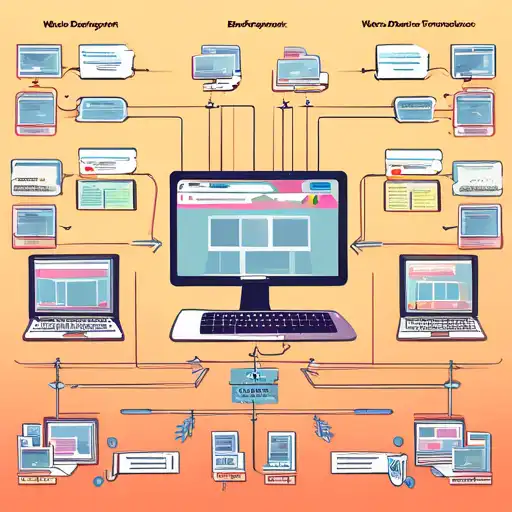Understanding Web Development Frameworks
In the ever-evolving world of web development, choosing the right framework can be a daunting task. With a plethora of options available, each promising to be the best, developers often find themselves at a crossroads. This guide aims to simplify that decision by highlighting key considerations and comparing popular frameworks.
Why Use a Web Development Framework?
Web development frameworks provide a structured foundation for building web applications. They offer reusable code, libraries, and tools that streamline the development process, ensuring efficiency and scalability. By leveraging a framework, developers can focus on creating unique features rather than reinventing the wheel.
Key Factors to Consider
When selecting a web development framework, consider the following factors:
- Project Requirements: The nature of your project significantly influences the choice of framework. For instance, a single-page application (SPA) might benefit from Angular or React, while a content-heavy site might be better suited for Django or Ruby on Rails.
- Learning Curve: Some frameworks, like Vue.js, are known for their gentle learning curve, making them ideal for beginners. Others, such as Angular, require a deeper understanding of concepts like TypeScript and dependency injection.
- Community and Support: A vibrant community and robust documentation can be lifesavers when you encounter challenges. Frameworks like React and Django boast large communities and extensive resources.
- Performance: Evaluate the performance implications of the framework. Lightweight frameworks like Svelte offer superior performance for certain use cases.
Popular Web Development Frameworks
Here’s a quick overview of some of the most popular web development frameworks today:
- React: A JavaScript library for building user interfaces, React is known for its virtual DOM feature, which optimizes rendering and improves app performance.
- Angular: Developed by Google, Angular is a comprehensive framework for building dynamic SPAs. It’s a full-fledged solution with built-in tools for routing, state management, and more.
- Vue.js: Vue.js strikes a balance between React’s flexibility and Angular’s comprehensiveness. It’s increasingly popular for its simplicity and scalability.
- Django: A high-level Python framework, Django encourages rapid development and clean, pragmatic design. It’s particularly suited for backend development.
Making the Right Choice
Ultimately, the best web development framework depends on your specific needs, team expertise, and project goals. Experiment with different frameworks, consult the community, and consider prototyping before making a final decision. Remember, the goal is to enhance productivity and deliver a stellar user experience.
For more insights into web development, check out our articles on emerging web development trends and frontend vs backend development.
